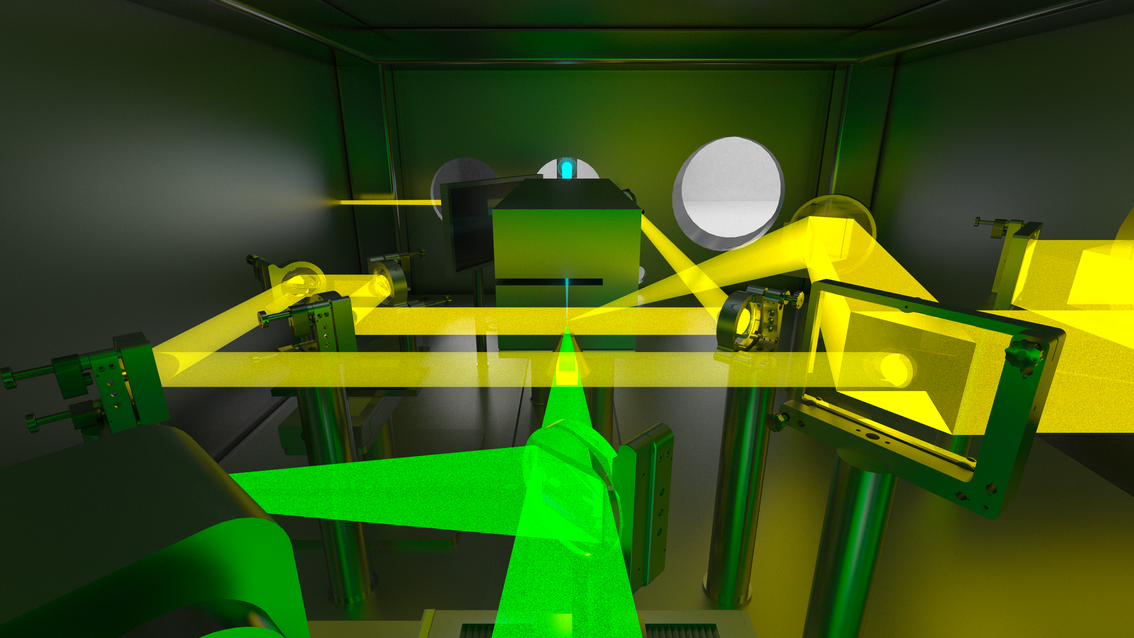In any accelerator, charged particles oscillate around the reference orbit. These oscillations are called betatron oscillations and usually are very few and with a period of several meters. The radiation emitted is negligible.
However, these oscillations are frequent in a plasma accelerator greater than 10, with a period of few microns. In this case, a large amount of energy is emitted, usually in the X-range wavelength.
Critical energy in the range between a few keV to hundreds of keV can be obtained with a total number of photons in the order of 109-1010 per shot.

The peak Brilliance, i.e. the number of the photons emitted for the unit of time, size, solid angle, and in the 0.1% of the bandwidth, is in the order of 1020 ph/sec/mm2/mrad2/0.1BW, comparable with the well-known synchrotron sources in the large accelerators. Of course, the synchrotron sources are superior in terms of repetition rate.
Another critical parameter is the radiation pulse length, being in the order of tens to hundreds of femtoseconds. These values are very similar to those obtainable with an FEL (Free Electron Laser).
Emitting x-rays with these characteristics paves the way for applications of several techniques, such as diffraction and phase contrast imaging, as well as all the experiments where the goal is the study of the temporal evolution of some physical parameters.
Betatron sources can be considered between Free electron Laser sources and Synchroton radiation sources. They produce fewer photons than an FEL but with the same pulse length and transverse coherence characteristics. The spectrum is broad, like a synchrotron radiation source with comparable peak brightness.
The electrons that produce betatron radiation can be self-injected in the plasma by an appropriate high-intensity laser pulse or externally injected by a conventional RF accelerator.
The main advantages of such a source are the compactness and the cost. The plasma source can be several millimeters up to a few centimeters in length. If just a laser is used, the size of a hundred TW lasers can be in a room of tens of square meters. Even if an external linac is used, the size of the apparatus can be less than 20 meters in length. If we compare these dimensions to synchrotron radiation or FEL source, the reduction is several orders in magnitude. Also, the cost of the source scales accordingly with the sizes.
The applications are vast, including biomedical applications, such as radiology, defense, and industrial applications, including the detection of explosives and drugs, and high-energy-density science, aimed at studying fusion plasmas and planetary and stellar interiors. These sources are particularly useful in condensed matter physics when a short pulse length is required.
Applications using the X-ray betatron radiation source @LNF
When a short laser pulse with a high intensity is focused inside a plasma, the laser ponderomotive force completely expels the plasma electrons away from the strong intensity regions to form an ion bubble in the wake of the pulse. Electrons trapped at the back of this structure are accelerated and wiggled to produce broadband, synchrotron-like radiation in the keV energy range.
A very important characteristic of the electron bunch produced in such interactions is its fs duration. The radiation pulse generated by the electron beam will have equivalent tens of fs duration and this has important implications for time resolved pump–probe experiments.
The radiation will be emitted from a small focal spot, in the order of few micrometers, thus ensuring highly coherent X-rays.
Given these important properties some of the possible and promising applications are surely X-ray phase contrast imaging (XPCI), X-ray absorption (XAS) and emission (XES) spectroscopies.
Within the EuPRAXIA Advanced Photon Sources (EuAPS) project a group of scientists coming from different Institutes started working on the experimental setup to be used for the different applications putting together their expertise in the different fields.
The pilot experiment using the EuAPS betatron radiation source will be on X-ray phase-contrast imaging and will be after followed by time resolved XAS.
People from CNR, INFN and the University of Tor Vergata are collaborating also with the following scientists working at the University of Trieste and at the University of Calabria:
Luca Brombal – Dept. of Physics, University of Trieste and INFN Trieste
Francesco Brun – Dept. of Engineering and Architecture, University of Trieste and INFN Trieste
Sandro Donato – Dept. of Physics and STAR-Lab, University of Calabria and INFN Laboratori Nazionali di Frascati (LNF)



